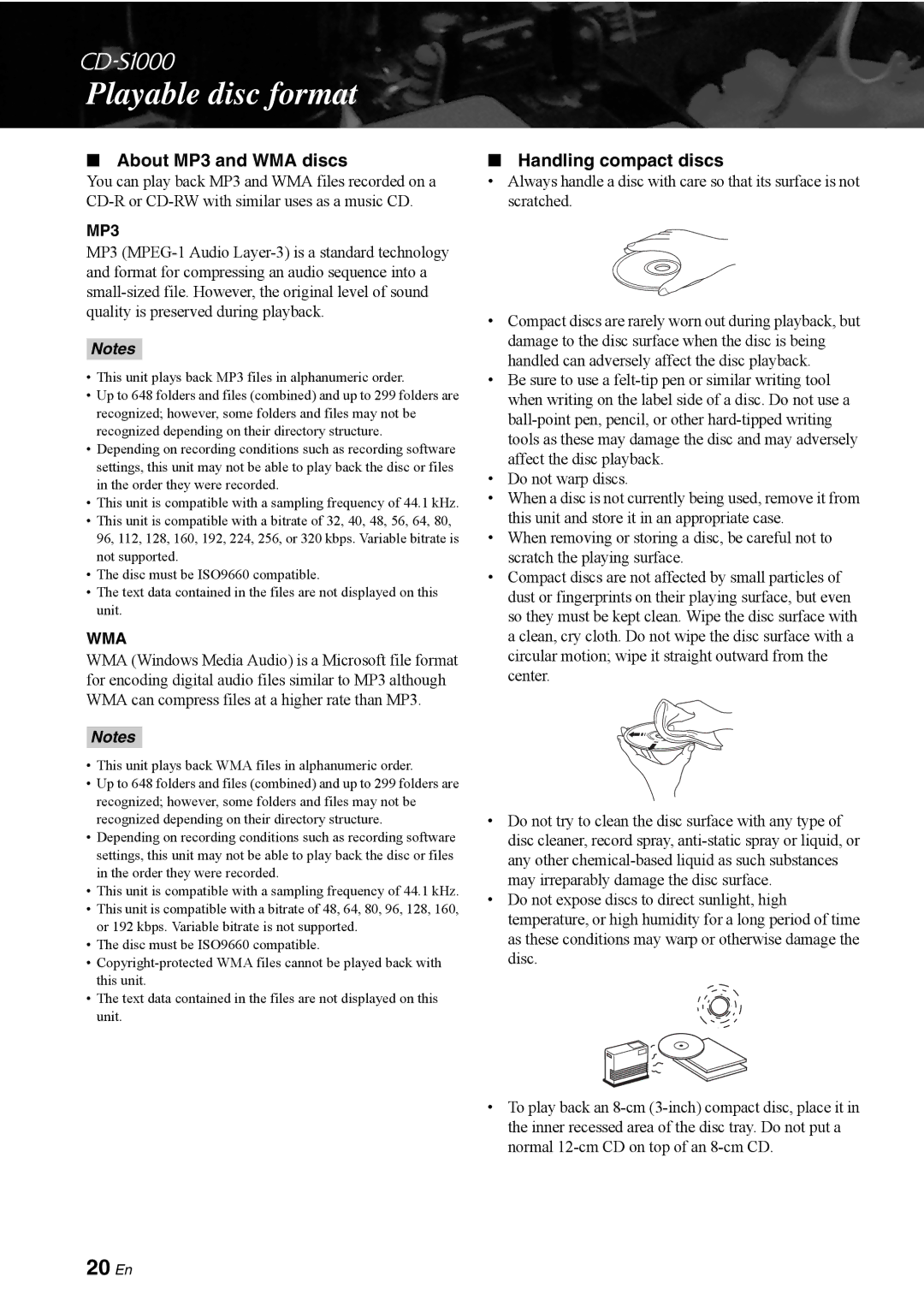
Playable disc format
■About MP3 and WMA discs
You can play back MP3 and WMA files recorded on a
MP3
MP3
Notes
•This unit plays back MP3 files in alphanumeric order.
•Up to 648 folders and files (combined) and up to 299 folders are recognized; however, some folders and files may not be recognized depending on their directory structure.
•Depending on recording conditions such as recording software settings, this unit may not be able to play back the disc or files in the order they were recorded.
•This unit is compatible with a sampling frequency of 44.1 kHz.
•This unit is compatible with a bitrate of 32, 40, 48, 56, 64, 80, 96, 112, 128, 160, 192, 224, 256, or 320 kbps. Variable bitrate is not supported.
•The disc must be ISO9660 compatible.
•The text data contained in the files are not displayed on this unit.
WMA
WMA (Windows Media Audio) is a Microsoft file format for encoding digital audio files similar to MP3 although WMA can compress files at a higher rate than MP3.
Notes
•This unit plays back WMA files in alphanumeric order.
•Up to 648 folders and files (combined) and up to 299 folders are recognized; however, some folders and files may not be recognized depending on their directory structure.
•Depending on recording conditions such as recording software settings, this unit may not be able to play back the disc or files in the order they were recorded.
•This unit is compatible with a sampling frequency of 44.1 kHz.
•This unit is compatible with a bitrate of 48, 64, 80, 96, 128, 160, or 192 kbps. Variable bitrate is not supported.
•The disc must be ISO9660 compatible.
•
•The text data contained in the files are not displayed on this unit.
■Handling compact discs
•Always handle a disc with care so that its surface is not scratched.
•Compact discs are rarely worn out during playback, but damage to the disc surface when the disc is being handled can adversely affect the disc playback.
•Be sure to use a
•Do not warp discs.
•When a disc is not currently being used, remove it from this unit and store it in an appropriate case.
•When removing or storing a disc, be careful not to scratch the playing surface.
•Compact discs are not affected by small particles of dust or fingerprints on their playing surface, but even so they must be kept clean. Wipe the disc surface with a clean, cry cloth. Do not wipe the disc surface with a circular motion; wipe it straight outward from the center.
•Do not try to clean the disc surface with any type of disc cleaner, record spray,
•Do not expose discs to direct sunlight, high temperature, or high humidity for a long period of time as these conditions may warp or otherwise damage the disc.
•To play back an
